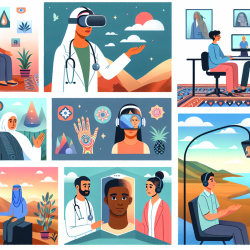Introduction
In the realm of special education and therapy services, practitioners often encounter students with rare conditions that require complex care coordination. A recent study titled Developing a Taxonomy of Care Coordination for People Living with Rare Conditions: A Qualitative Study provides a framework that can significantly enhance the way practitioners manage these cases. This blog explores how the outcomes of this research can be implemented to improve practitioner skills and encourages further exploration of care coordination strategies.
Understanding the Taxonomy of Care Coordination
The study, conducted in the UK, aimed to develop a comprehensive taxonomy for coordinating care for individuals with rare conditions. This taxonomy is divided into six domains:
- Ways of Organizing Care: Local, hybrid, and national models.
- Ways of Organizing Those Involved in Care: Collaboration levels among professionals and between professionals and patients.
- Responsibility for Coordination: Administrative support, formal roles, and supportive roles.
- Frequency of Appointments and Coordination: Regular, on-demand, or hybrid schedules.
- Access to Records: Full or filtered access for patients and providers.
- Mode of Care Coordination: Face-to-face, digital, or telephone methods.
Implementing the Taxonomy in Practice
For practitioners working with students with rare conditions, understanding and implementing this taxonomy can streamline care coordination. Here are some practical steps:
- Adopt a Hybrid Model: Combine local and national resources to ensure comprehensive care. Utilize online therapy platforms like TinyEYE to bridge geographical gaps.
- Enhance Collaboration: Foster multidisciplinary team meetings that include all stakeholders, including parents, to ensure a holistic approach to care.
- Define Roles Clearly: Assign specific coordination roles to team members to ensure accountability and streamline communication.
- Flexible Scheduling: Implement a mix of regular and on-demand appointments to cater to the dynamic needs of students with rare conditions.
- Ensure Access to Information: Utilize digital platforms to provide full or necessary access to records for all involved parties, ensuring transparency and continuity of care.
- Leverage Technology: Use digital tools and teletherapy to facilitate communication and care delivery, making services more accessible and efficient.
Encouraging Further Research
While the taxonomy provides a robust framework, it is crucial for practitioners to engage in continuous learning and research. Attending conferences, webinars, and reading publications on care coordination can provide insights into new models and strategies. Practitioners are encouraged to collaborate with researchers to evaluate the effectiveness of implemented models and contribute to the development of new care coordination strategies.
Conclusion
Implementing the taxonomy of care coordination can significantly enhance the skills of practitioners working with students with rare conditions. By adopting a structured approach to care coordination, practitioners can ensure that students receive the comprehensive and personalized care they need. For those interested in exploring this topic further, the original research paper offers a detailed insight into the taxonomy and its applications.
To read the original research paper, please follow this link: Developing a taxonomy of care coordination for people living with rare conditions: a qualitative study.










